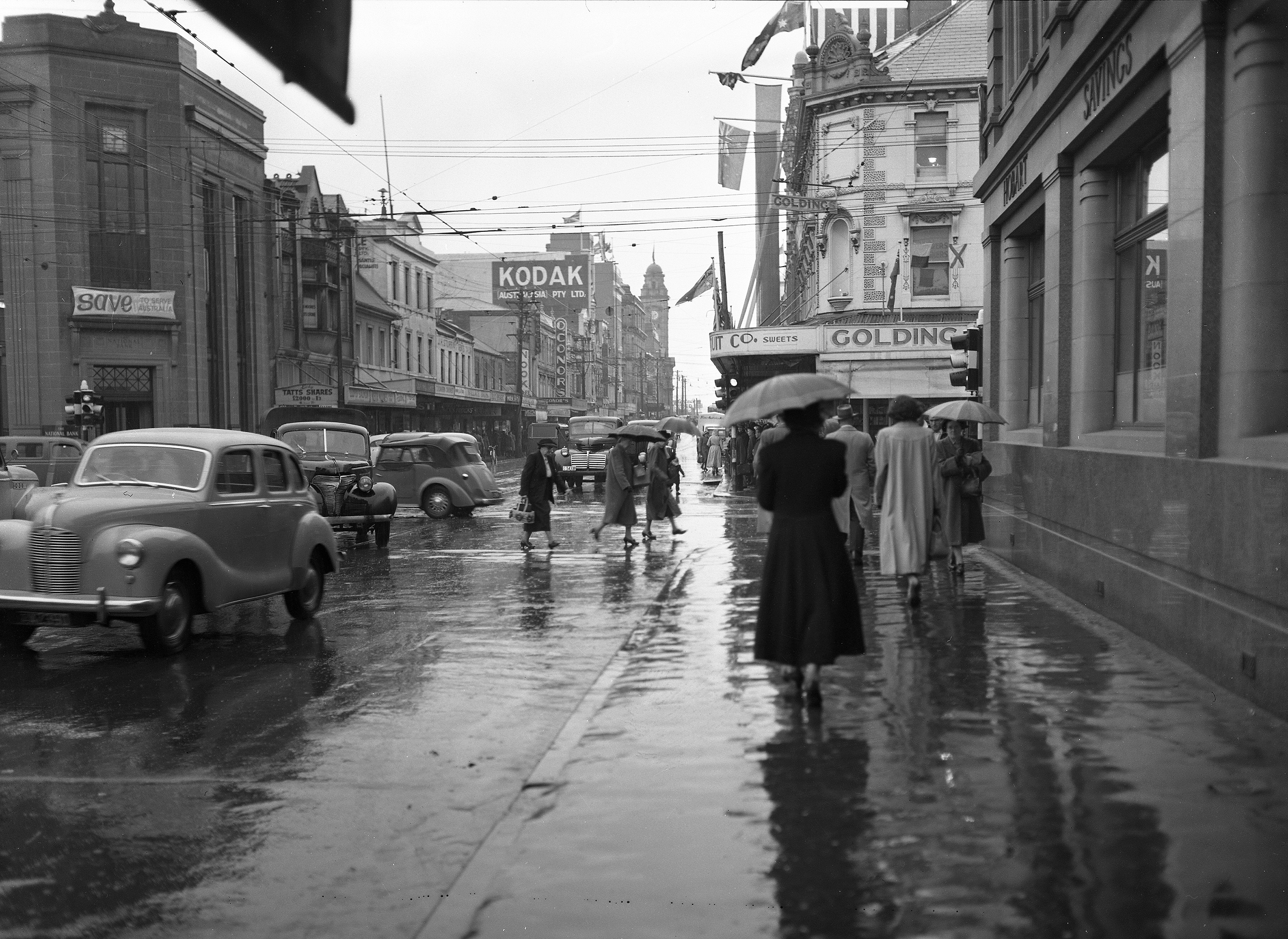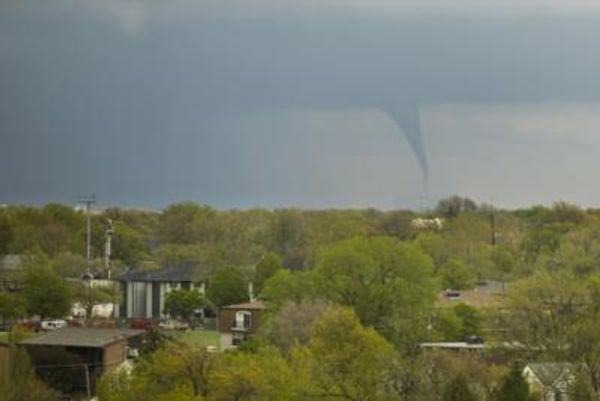
Scrolling through Facebook one evening in October I came across the photograph above, posted by a member of a Tasmanian history group I follow. She noted that it comes from the State Library of Tasmania but believed its date and location are unknown.
Within three minutes of posting, two members of the group had commented on top of each other to say the photo was taken at the corner of Liverpool and Elizabeth Streets, Hobart, looking up what is now Elizabeth Mall towards the GPO clock tower on the left. That’s how quick and attentive people are in groups like this. And they were correct, I know the place perfectly well. I don’t live there anymore, but this is my home city.
Old photographs are posted in this group several times a day and each attracts many comments, and sometimes dozens. This is just one local history group among countless others on Facebook and other social media platforms. Nostalgia is the main theme, certainly, but with every post, comment and share, memories are stimulated and connections with place and community are enacted.
Recollections are often detailed and intricate. Concerning the date of the rainy-day photograph someone suggested the women’s coats indicate late 1950s. “A bit earlier I think,” came a swift reply. “By the mid–late 1950s hemlines had risen a few inches to a bit below the knee. I remember them well from my teenage dressmaking days!”
Others leapt in to name the make of the cars, the consensus being that the one in the foreground is an Austin A40 Devon, although a few people suggested a Hillman Minx. “I immediately could smell the upholstery,” said one. “Go Dad!”
Still others noticed the banks. People love to reminisce about banks. “What happened to the beautiful old bank on the corner?” someone asked. It’s still there, came a reply, now a branch of the National Australia Bank, but the clock has been removed recently, they thought, having not displayed the correct time for a while.
The Hobart Savings Bank on the extreme right of the image has been pulled down and replaced with what one commenter described as a “modern monstrosity.” Someone else claimed to still have a pink bankbook from there with a few pounds in the account, but: “I suppose the government has pinched that.” This person remembered being interviewed by the manager there for a home loan, $20,000 over twenty-five years at 6 per cent. “Real service back then by real people, all those tellers. We have lost so much.”
By this time I was thoroughly engrossed in the world of this photograph. I sent it to my two brothers. Yes, that’s an Austin A40, said Paul, and the car with the smashed-up grille in the centre of the photograph is a Chevrolet (“1939 I think”). He noticed the traffic lights, which I had missed, and how all the pedestrians are wearing titfers. Hats, that is. (I had to look that up.)
Mark remembered the Kodak store still trading in the 1970s. “Mind you, I remember when Hobart had half-a-dozen good photo/camera stores,” he added. As a keen photographer himself, he appreciated the mood and story in the photograph. It’s harder than it looks to take pictures that do that.
For me the main feature is the GPO clock. Our grandfather worked in that building, and I picture him glancing out the window at that very moment, hoping the rain might have eased in time for his bus ride home.
I like to know the origins of things, so I sought out the photograph’s descriptive information at the State Library of Tasmania. It does have a fairly precise date, May 1953. (So, the Facebook commenter knowledgeable about 1950s hemlines was right.) It is one of a series of about 12,000 images made between 1951 and 1973 by the Tasmanian Education Department. Hats off to the library staff for their work to preserve and digitise this series; it’s magnificent.
The photos cover a wide range of subjects other than schools and education, suggesting that the department’s photographers could be called on for a variety of assignments. Our rainy-day photograph shows that they might also fill the end of a roll on the way back to the office with whatever took their fancy.
Mark is right, it’s the mood of the photograph that is captivating. Wet streets are eternally interesting for photographers and artists, and this unknown photographer appears to have sheltered under an awning and brought the shutter down just as everyone is too busy getting out of the rain to notice or care.
See how they have caught the Chevrolet’s crumpled grille just as it swung around the corner towards us? This car has had a bingle, as my father would say, the sort of thing that could occur on any wet day. Central Hobart was not built for cars, and yet in these postwar years a lot more people could afford them. The result: frustration.
Then there’s the woman on the right who draws our gaze as she walks briskly away from us into the frame. With her reflection shimmering up from the pavement, she turns provincial Hobart into a scene John le Carré could have conceived. The cut of her coat is pure 1950s. Clothes rationing is out, Christian Dior’s New Look is in, and this woman can afford the latest modes.
Other women appear to be making do with their older things. The woman with the basket crossing the street, head down against the rain: she could have been wearing that severe jacket and skirt since the 1930s. She’d be about our grandmother’s age, I should think, part of a generation for whom frugality was a necessity and later a habit.
The more I look at the photograph, the deeper I fall into a liminal state between connection and disconnection. I know this place, and yet I don’t. I belong and yet I don’t. I think it’s the raindrops bouncing up off the road that gives the image its perpetual drama. Where is all that water going to go? In Hobart, it goes into the Hobart Rivulet.
Autumn is when the rivulet is most prone to flooding. In June 1954, thirteen months after our photograph was taken, flash floods forced several feet of water into the basement of O’Conor’s shoe shop. You can see the shop sign in the photograph. Staff working there to save the stock might have drowned if the floor-level windows had given way. There had been bad floods in 1923 and 1947, but the 1954 floods were said to be the worst in a hundred years.
The rivulet emerges on the slopes of kunanyi/Mount Wellington and runs through present-day Fern Tree and South Hobart. Reaching the city, it ducks underground and up again a few times before disappearing for a kilometre or so directly under the CBD. (In 2016 the rivulet wall was breached during building works, causing more than $15 million in damage to the Myer department store and several retailers in the adjacent Cat and Fiddle Arcade.) Then it comes up for air for a short stretch parallel to lower Collins Street, disappears, and finally meets the River Derwent at an outlet north of Macquarie Point.
For thousands of years First Nations Tasmanians moving seasonally through the Hobart region would have understood the rivulet’s seasons and moods, and how it connected with other natural watercourses to support animal and birdlife. Then, in February 1804, lieutenant-governor David Collins decided that this was the ideal place to establish a settlement. The “Run of clear fresh Water” he found there played a large part in his decision. Efforts the previous year at Risdon Cove, on the eastern side of the Derwent, had faltered partly for lack of reliable clean water.
Collins understood the need to protect the rivulet, and within weeks had issued instructions to the settlers not to pollute it or destroy the “underwood” close to its banks. By 1805 a footbridge had been built across it connecting a bush track leading north, which later became Elizabeth Street. This bridge was replaced in 1816 by a brick structure named Wellington Bridge after the famous duke. Today it is covered over by Elizabeth Street but a small void protected by a grille affords the curious shopper a reminder of Hobart’s earliest days.
The first European settlers quickly learned that although the rivulet could sink to a trickle in the summer, heavy rain or snowfall on the mountain could turn it into a torrent. And this was even before the town authorities decided to alter its course for the first time, in 1825, with what was known as the “New Cut” along a section of lower Collins Street.
The New Cut diverted the rivulet towards another creek and sent both of them away from their natural bed, which had been under the present site of the City Hall. Their confluence had formed a silty beach prone to flooding, and the diversion was designed to facilitate land reclamation in support of burgeoning waterfront industries.
Early maps of Hobart — this one for instance — show how the rivulet once pursued its own gentle course from the mountain to the river, and how ruthless was the grid of streets imposed on top of it. Over time the rivulet has been diverted, dammed and forced through numerous pipes, tunnels and culverts: controlled and exploited, in other words, for the settlers’ convenience.
David Collins’s instructions to protect the rivulet were ignored, and by the mid 1820s it had become polluted by refuse from humans, animals, tanneries and distilleries. Outbreaks of disease were inevitable. In 1828 the town sheriff reported that the rivulet had become a “receptacle for all the filth and impurity of the town.”
The strip along lower Collins Street was the worst, and just as likely to flood as before. It has never been a pretty part of town, as you can see. In high school I had to catch a bus along here and my moody teenaged thoughts were not enhanced by having to stare at a tired old watercourse while I waited. Residential housing had all gone by then and I didn’t know that these streets used to be known unofficially as “Wapping,” after the working-class waterfront area of London. For a hundred years or more, the people of Hobart’s Wapping suffered the most from flooding and pollution, as the poorest people often do.
Efforts over many decades to improve the supply and quality of Hobart’s water finally culminated in 1895 with the completion of two major reservoirs at the Waterworks Reserve above South Hobart, with a combined capacity of 500 million litres. They still supply Hobart’s drinking water.
The rivulet can still rise up in anger. Calamitous flooding in 1960 led to new control measures, but in 2018 the section along lower Collins Street once again turned into a seething and very dangerous torrent. A group of urban geographers noted then that the problem (not unique to Hobart) is that urban planning measures have become disconnected from nature and overlook the ecological functions of watercourses. Built-up areas deprive a city of green spaces that act like natural sponges. It’s hard to apply water-sensitive planning principles to a city already built.
At the end of my meditation on the photograph taken in Hobart in 1953 I returned to the original question: where does all that water go? How do we prevent our cities from becoming alienated from their natural environmental features? The upper reaches of the rivulet are better managed now, but the challenges are real. Still, the open waterway is fouled by rubbish and other pollutants, some from the South Hobart tip.
If you have fifty-three minutes to spare, spend them with Pete Walsh, the Platypus Guardian. Pete, who first sought solace at the rivulet after a serious medical diagnosis, was drawn there to reconnect with something he thought he was losing. Sitting on the bank one day he was astonished when a platypus emerged from the water and zoomed up to him, wiggling her bill as if she had something to say. He realised that a fragile population of platypuses was still managing — against all odds — to call the Hobart Rivulet home.
The more Pete visited the rivulet the more often he saw this zooming platypus, so he named her Zoom. That profound moment of connection inspired in Pete a passion to do what he could to preserve a habitat for these ancient animals, and a whole community of supporters has since joined him. If Zoom has a message, it must surely be to ask us to tread more lightly on this earth. •
The post A rainy day in Hobart appeared first on Inside Story.







